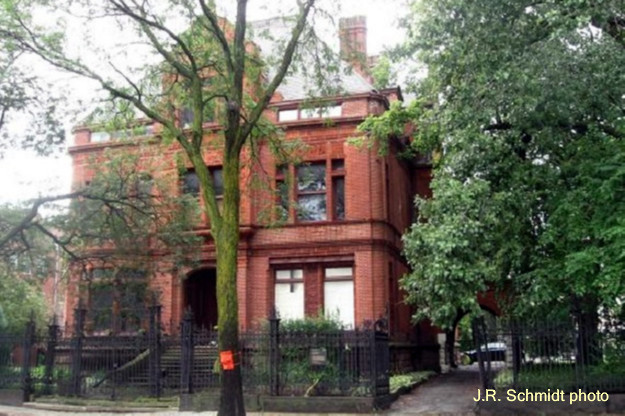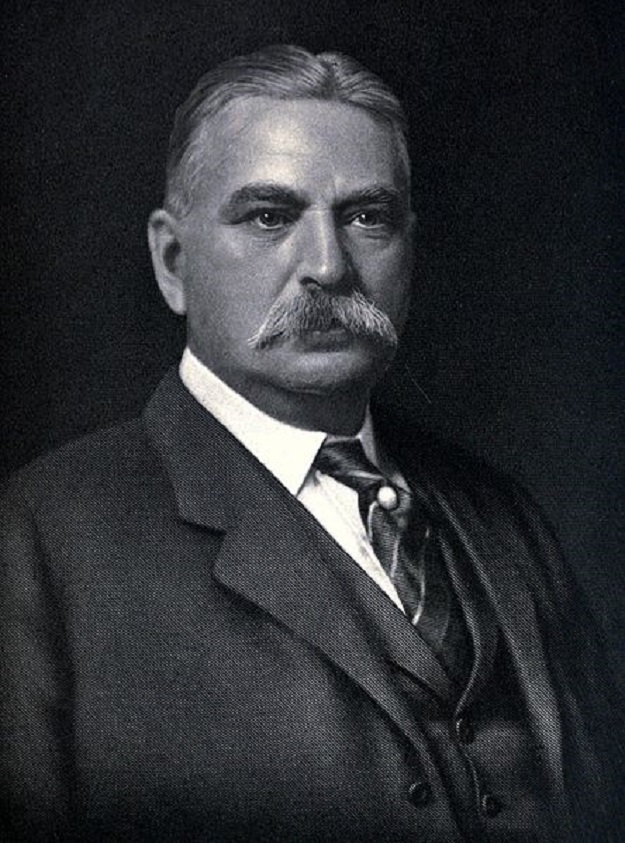Bet-a-Million Gates and his mansion
By John R. Schmidt

Bet-a-Million Gates and his mansion
By John R. SchmidtMichigan Avenue, south of 26th Street, was once called “Millionaires’ Row.” That’s when a million dollars was hard to get. Now any utility infielder or personal injury lawyer has that much cash in walking-around money.
At the turn of the last century, the avenue was thick with mansions. Time passed, the neighborhood declined, the mansions were carved up into rooming houses. Then came the bulldozers, then came urban renewal. Go south on Michigan today and you’ll think you’re in Schaumburg.
A few of the grand homesteads survive. The most historic is 2944 S. Michigan Avenue. This was the home of John Warne Gates–”Bet-a-Million” Gates.

That was a helluva nickname to live up to. Gates did. But before he could bet a million, he had to get much more.
Gates was born in 1855, near what is now West Chicago. He made his first fortune selling barbed wire to Texas ranchers, then took that money and moved into the oil business. He also became a major league stock speculator. Wall Street insiders said that Gates was one of the few people clever enough to out-maneuver J.P. Morgan.
Back to the nickname. Many tales are told about how Gates earned it. He won a million dollars betting on a single horse race in Britain. He won a million-plus in an all-night poker game while traveling by train from Chicago to New York. He lost a million betting on which raindrop would get to the bottom of a window first.
Any of the stories could be true–or none of them. Maybe it was simply the mystique that surrounded the man.

The mansion on Michigan Avenue was built for Chicago financier Sydney Kent in 1883. The architecture was by the firm of Burnham & Root. They later used variations on the sculptured masonry style in the Rookery and Monadnock buildings downtown.
Gates bought the house in 1897. That was one of his better years–he cleared $12 million on stock market manipulations alone. If you check out that number on an inflation calculator, it works out to about a half-a-billion dollars today.
Once he settled in, Gates solidified his reputation as a lavish party-giver. An invitation to one of his bashes was a social triumph.
“The crystal chandeliers in the great paneled rooms often burned brightly far into the night,” one journalist wrote. “The porte-cochere on the north side of the house was always astir with the arrival or departure of polished carriages and coaches-and-four.”
Gates actually lived in the house for less than 10 years. He later moved his family to New York, to be closer to the financial action. He died in 1911.
Back in Chicago, the Michigan Avenue building passed through many stages. An Indianapolis millionaire named M.D. Spades bought it from Gates. Later it was a college dormitory. The Catholic Youth Organization owned the property for a while, using it as a residence for unemployed young men. After that it became a convent.
During the 1980s, 2944 S. Michigan was converted to apartments. Today it’s condos. Since 1987 the building has been an official Chicago landmark called the Sydney Kent House.
By my calculation, John W. Gates lived in this building for about 7 percent of its history. Yet without the Gates connection, nobody but architectural historians would be talking about the place. That’s vital.
Go east, and you can find a bunch of very old houses boasting that–for one night in 1777–”George Washington Slept Here.”
So let’s put John W. Gates on the designation, along with Sydney Kent. Give Bet-a-Million his due. At least he lived in the house long enough to have the snow shoveled.

